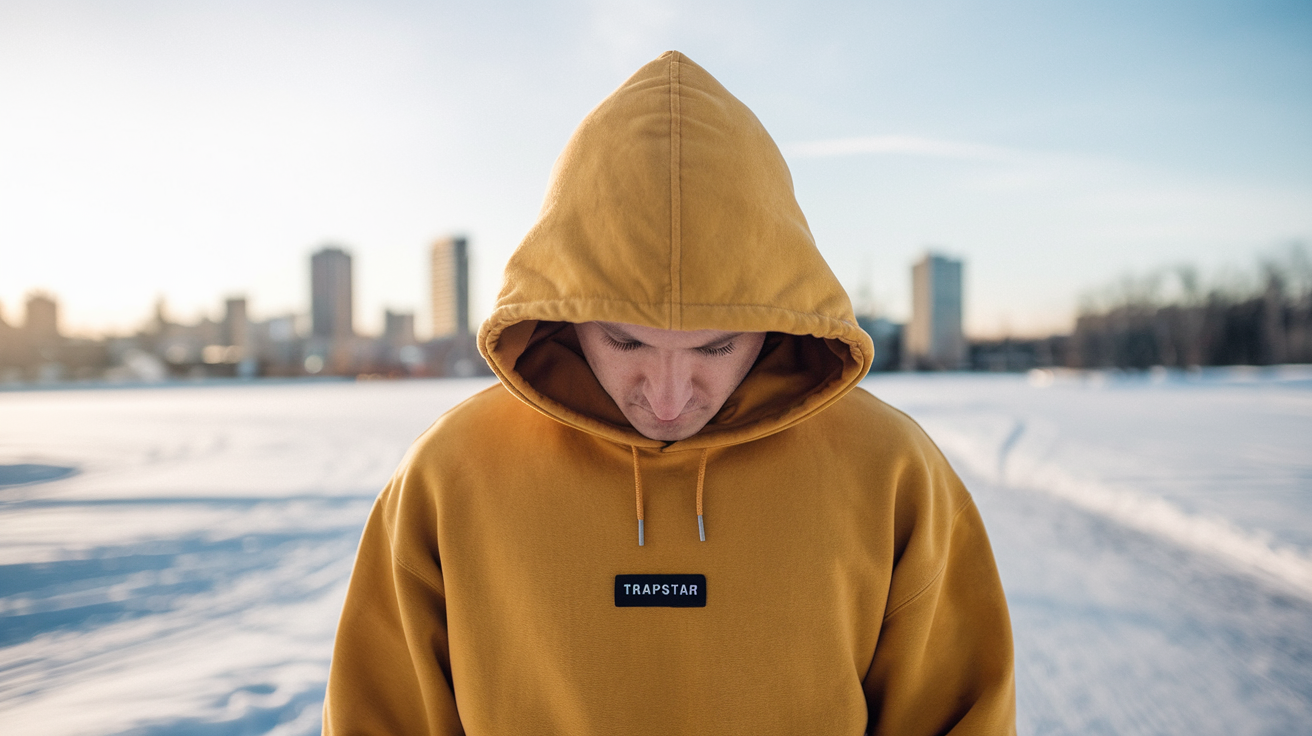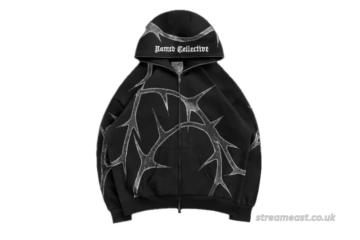When three friends from West London decided to start printing t-shirts in a bedroom back in 2005, they had no plan; they were about to create individual of the most effective streetwear brands in the globe. Trapstar has grown from humble origins to fertilizer A-list celebrities and controlling the worldwide streetwear scene. This underground brand has managed to uphold its exclusive, secret appeal while becoming a household name among fashion enthusiasts generally.
The story of Trapstar is just another clothing brand success tale—it’s a testament to how authentic street culture can transcend terrestrial boundaries and social obstructions. From secret pop-up shops to star endorsements, Trapstar has redefined what it means to be a restricted streetwear brand.
The Underground Origins of Trapstar
Trapstar was founded by youth friends Mikey, Lee, and Will in London’s Ladbroke Grove area. The three started their journey with a simple mission: conceive clothing that depicted their authentic street occurrence. They began by changing existing garments and trading them to friends, operating under a strict “it’s a secret” motto that would enhance central to their brand correspondence.
The name “Trapstar” itself reflects the brand’s raw, unfiltered way to streetwear. Drawing inspiration from trap music education and street life, the founders desired to create attire that spoke to young people the one felt disconnected from mainstream fashion. Their early designs featured insolent graphics, secret messaging, and a distinctive beauty that immediately set them apart from other arising brands.
What made Trapstar unique from the beginning was their assurance to exclusivity. Unlike other brands that sought maximum visibility, Trapstar deliberately observed their operations secretively. They would announce drops through word-of-mouth, host secret buying events, and maintain an air of intrigue that made owning their pieces feel like touching an exclusive club.
Building a Brand Through Authenticity
The early 2000s London streetwear scene was vastly different from today’s soggy market. Trapstar emerged all along at a time when British street fashion was still finding its voice, thickly influenced by American hip-hop culture but searching for allure of its own identity. The founders recognized this breach and filled it with their clearly London perspective.
Their breakthrough reached when they started customizing pieces for local musicians and artists. Word spread fast through London’s tight-knit artistic community, and soon, settled artists were seeking out Trapstar pieces. This basic growth through cultural connections rather than traditional shopping became a cornerstone of their happiness strategy.
The brand evolved to incorporate military-inspired designs, bold typography, and citations to London highway culture. Their pieces frequently featured cryptic ideas, related significant London settings, and imagery that resonated with urban minorities. This consideration to cultural detail assisted establish Trapstar as more than just an attire brand—it enhanced a symbol of existent London street culture.
Celebrity Authorization and Global Recognition
Trapstar’s trajectory changed severely when important celebrities started wearing their pieces. Rihanna was photographed in ritual Trapstar pieces, followed by endorsements from Jay-Z, Stormzy, and numerous other influential figures in music and entertainment. These hero connections weren’t paid partnerships—they were natural relationships buxom through the brand’s authentic connection to imaginative communities.
The brand’s friendship with Rihanna proved specifically transformative. When she was spotted wearing Trapstar multiple times, it sparked global interest in the London-based brand. This exposure to international demand far surpassed the brand’s initial capacity, building the kind of shortage that luxury brands spend heaps trying to solve.
Celebrity endorsement helped Trapstar change from a local London brand to an international wonder. However, the founders remained committed to their original concept of exclusivity and genuineness. They resisted the temptation to build their designs, instead claiming limited releases that preserved the brand’s secret appeal.
The Art of Limited Releases and Hype Culture
Trapstar pioneered many of the shopping techniques that define modern streetwear culture. Their limited-release strategy, known as “drops,” constitutes intense demand for each new collection. The brand announces releases with little notice, often selling out within minutes of going live.
This shortage model has become principal to Trapstar’s appeal. Each piece becomes a collector’s item, with resale values frequently exceeding original prices. The brand has mastered the therapy of hype education, understanding that exclusivity drives desire more effectively than chance.
Their pop-up shop method further reinforces this exclusivity. Trapstar periodically opens temporary sell locations in unexpected places, reported only through their social news channels. These events become cultural gatherings, bringing together fans from across the city and creating memorable experiences that extend beyond simple retail transactions. Also Read
Distinctive Design Philosophy and Aesthetic
Trapstar’s design accent is immediately recognizable. The brand generally uses bold typography, commonly incorporating their sign “T” logo in various configurations. Their color palette usually features black, white, and red—colors that transmit both taste and aggression.
Military influences act throughout their collections, from camouflage patterns to strategic-style jackets and baggage pants. This military benefit connects with the brand’s street credibility while attractive to fashion-conscious consumers who appreciate practical design elements.
The brand’s graphic designs often contain cryptic ideas, coordinates, and cultural remarks that reward close inspection. This attention to detail devises deeper connections with customers who enjoy the thought behind each design element. Many pieces feature locale coordinates of significant places in London, creating a sense of place and cultural similarity that resonates with both local and international consumers.
Impact on British Fashion and Global Streetwear
Trapstar’s success has had significant implications for British fashion. The brand proved that London-based streetwear can compete on the global stage, inspiring countless added British designers to pursue similar ways. They demonstrated that authenticity and educational connection may be more powerful than traditional fashion industry connections.
The brand’s influence extends further into music and youth ideas. Trapstar pieces have become rank symbols within UK hip-hop and grime settings, with artists commonly referencing the brand in lyrics and music videos. This cultural unification has helped maintain the brand’s pertinence as fashion trends evolve.
Internationally, Trapstar has affected how streetwear brands approach uniqueness and cultural authenticity. Their progress has become a motif for emerging brands pursuing to build hype and maintain uniqueness in an increasingly cramped marketplace.
Looking Forward: Trapstar’s Continuing Evolution
As Trapstar approaches its third decade, the brand faces the challenge of upholding its secret appeal while meeting global demand. The founders have carefully governed growth, guaranteeing that growth doesn’t compromise the uniqueness that defines their brand identity.
Recent collections show the brand continuing to progress while staying real to allure core beauty. They’ve tested with new textures, expanded their product range, and plotted with additional brands while maintaining their sign design speech and release strategy.
The brand’s future profit will likely depend on their capability to balance accessibility with exclusivity, progress with genuineness, and global appeal with local educational links.
The Enduring Appeal of Street-Level Luxury
Trapstar’s journey from bedroom startup to global streetwear image shows the power of genuine brand building.. Their success stems from understanding their hearing, maintaining consistent kind, and never compromising their center values for quick progress.
The brand has created a template for how streetwear can achieve indulgence status without falling off its edge. By upholding exclusivity, building real cultural connections, and usually delivering character products, Trapstar has established itself as in addition to just a clothing brand—it’s enhancing a cultural phenomenon.
For fashion companions, Trapstar shows the perfect intersections of court credibility and luxury appeal. For contractors, it offers valuable communication about the volume of authenticity, the significance of uniqueness, and the potential of construction of absolute educational relations. As streetwear endures to rule all-encompassing fashion, Trapstar’s influence will likely go on forming how brands approach design, shopping, and enlightening date.




